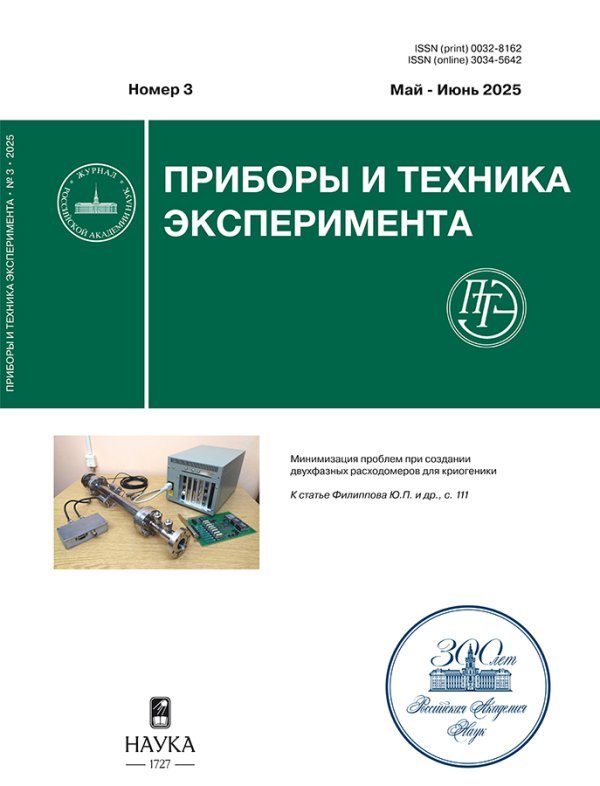Tin (IV) Oxide Coatings with Different Morphologies on the Surface of a Thinned Quartz Fiber for Sensor Application
- Authors: Sudas D.P.1,2, Kuznetsov P.I.2
-
Affiliations:
- Peter the Great St. Petersburg Polytechnical University
- Kotel’nikov Institute of Radioengineering and Electronics of the Russian Academy of Sciences (Fryazino Branch)
- Issue: No 5 (2023)
- Pages: 174-179
- Section: ЛАБОРАТОРНАЯ ТЕХНИКА
- URL: https://vietnamjournal.ru/0032-8162/article/view/670430
- DOI: https://doi.org/10.31857/S0032816223050221
- EDN: https://elibrary.ru/ZVIYBQ
- ID: 670430
Cite item
Abstract
Thin-film coatings of tin oxide on the surface of a chemically thinned section of a single-mode quartz fiber have been obtained and experimentally characterized. The materials were synthesized on the fiber surface by metal-organic chemical vapor deposition (MOCVD). To change the surface morphology, we used different amounts of tetramethyltin (SnMe4) supplied by a carrier gas (dried air) to the deposition zone by varying the temperature of the bubbler with the reagent. During deposition, the transmission spectrum of the optical path was recorded in real time, and the temperature of the bubbler in the experiments varied from –20 to +20°С. After studying the surface on a scanning electron microscope, the deposited films were tested for chemical resistance to an aqueous solution of sulfuric acid and the sensitivity of the lossy mode resonance (LMR) to changes in the refractive index of the environment in the range from 1.35 to 1.41 was evaluated. Samples produced at higher reagent flow rates exhibited a greater resonance sensitivity of 3800 nm/refractive index unit (RIU) for the first-order TM component of the resonance, but such coatings dissolve noticeably in concentrated sulfuric acid solutions, in contrast to coatings obtained with low reagent consumption.
We’re sorry, something doesn't seem to be working properly.
Please try refreshing the page. If that doesn't work, please contact support so we can address the problem.
About the authors
D. P. Sudas
Peter the Great St. Petersburg Polytechnical University; Kotel’nikov Institute of Radioengineering and Electronics of the Russian Academy of Sciences (Fryazino Branch)
Email: dmitriisudas@mail.ru
195251, St. Petersburg, Russia; 141190, Fryazino, Moscow oblast, Russia
P. I. Kuznetsov
Kotel’nikov Institute of Radioengineering and Electronics of the Russian Academy of Sciences (Fryazino Branch)
Author for correspondence.
Email: dmitriisudas@mail.ru
141190, Fryazino, Moscow oblast, Russia
References
- Kersey A.D. // Opt. Fiber Technol. 1996. V. 2. P. 291. https://doi.org/10.1006/ofte.1996.0036
- Franzão O., Santos J.L., Araújo F.M., Ferreira L.A. // Laser & Photon. Rev. 2008. V. 2. P. 449. https://doi.org/10.1002/lpor.200810034
- Roriz P., Franzão O., Lobo-Ribeiro A.B., Santos J.L., Simoes J.A. // J. Biomed. Opt. 2013. V. 18. № 5. Art. ID 050903. https://doi.org/10.1117/1.jbo.18.5.050903
- Del Villar I., Arregui F.J., Zamarreno C.R., Corres J.M., Bariain C., Goicoechea J., Elosua C., Hernaez M., Rivero P.J., Socorro A.B., Urrutia A., Sanchez P., Zubiate P., Lopez D., De Acha N. et al. // Sens. Actuators B. 2017. V. 240. P. 174. https://doi.org/10.1016/j.snb.2016.08.126
- Kerttula J., Filippov V., Chamorovskii Yu., Ustimchik V., Golant K., Okhotnikov O. G. // Proc. SPIE 8237. Fiber Lasers IX: Technology. Systems and Applications. 2012. Art. ID 82370W. https://doi.org/10.1117/12.908147
- Dianov E. // Light Sci Appl. 2012. V. 1. Art. ID e12. https://doi.org/10.1038/lsa.2012.12
- Dejneka M., Samson B. // MRS Bulletin. 1999. V. 24. P. 39. https://doi.org/10.1557/S0883769400053057
- Sanada K., Shamoto T., Inada K. // J. Non-Crystalline Solids. 1995. V. 189. P. 283. https://doi.org/10.1016/0022-3093(95)00233-2
- Ascorbe J., Corres J.M., Matias I.R., Arregui F.J. // Sens. Actuators B. 2016. V. 233. P. 7. https://doi.org/10.1016/j.snb.2016.04.045
- Zhu S., Pang F., Huang S., Zou F., Dong Y., Wang T. // Opt. Express. 2015. V. 23. P. 13880. https://doi.org/10.1364/OE.23.013880
- Arregui F.J., Del Villar I., Zamarreno C.R., Zubiate P., Matias I.R. // Sens. Actuators B. 2016. V. 232. P. 660. https://doi.org/10.1016/j.snb.2016.04.015
- Wang J., Luo Z., Zhou M., Ye C., Fu H., Cai Z., Cheng H., Xu H., Qi W. // IEEE Photonics J. 2012. V. 4. P. 1295. https://doi.org/10.1109/JPHOT.2012.2208736
- Lee J., Koo J., Jhon Y.M., Lee J.H. // Opt. Express. 2014. V. 22. P. 6165. https://doi.org/10.1364/OE.22.006165
- Lee H., Kwon W.S., Kim J.H., Kang D., Kim S. // Opt. Express. 2015. V. 23. P. 22116. https://doi.org/10.1364/OE.23.022116
- Henry W.M. // Proc. SPIE. Chemical, Biochemical, and Environmental Fiber Sensors VI. 1994. V. 2293. https://doi.org/10.1117/12.190957
- Wang Z., Zhu G., Wang Y., Li M., Singh R., Zhang B., Kumar S. // Appl. Opt. 2021. V. 60. P. 2077. https://doi.org/10.1364/ao.418875
- Tabassum S., Kumar R. // Adv. Mater. Technol. 2020. V. 5. Art. ID 1900792. https://doi.org/10.1002/admt.201900792
- Paliwal N., John J. // IEEE Sens. J. 2015. V. 15. P. 5361. https://doi.org/10.1109/JSEN.2015.2448123
- Wang X., Wang Q., Song Z., Qi K. // AIP Adv. 2019. V. 9. Art. ID 095005. https://doi.org/10.1063/1.5112090
- Urrutia A., Del Villar I., Zubiate P., Zamarreco C.R. // Laser Photon. Rev. 2019. Art. ID 1900094. https://doi.org/10.1002/lpor.201900094
- Ozcariz A., Ruiz-Zamarreco C., Arregui F.J. // Sensors. 2020. V. 20. P. 1972. https://doi.org/10.3390/s20071972
- Usha S.P., Mishra S.K., Gupta B.D. // Sens. Actuators B. 2015. V. 218. P. 196. https://doi.org/10.1016/j.snb.2015.04.108
- Sanchez P., Mendizabal D., Zamarreno C.R., Matias I.R., Arregui F.J. // Proc. SPIE 9634. 2015. Art. ID 96347M. https://doi.org/10.1117/12.2195177
- Matias I.R., Ikezawa S., Corres J. Fiber Optic Sensors: Status and Future Possibilities. Springer International Publishing, Switzerland. 2017. V. 21. P. 51. https://doi.org/10.1007/978-3-319-42625-9
- Li W., Zhang A., Cheng Q., Sun C., Li Y. // Optik. 2020. V. 213. Art. ID 164696. https://doi.org/10.1016/j.ijleo.2020.164696
- Savelyev E.A. // Eur. Phys. J. D. 2021. V. 75. Art. ID 285. https://doi.org/10.1140/epjd/s10053-021-00296-0
- Kuznetsov P.I., Sudas D.P., Savel’ev E.A. // Instrum. Exp. Tech. 2020. V. 63. P. 516. https://doi.org/10.1134/S0020441220040302
- Kuznetsov P.I., Sudas D.P., Yapaskurt V.O., Savelyev E.A. // Opt. Mater. Exp. 2021. V. 11. P. 2650. https://doi.org/10.1364/OME.433169
- Kuznetsov P.I., Sudas D.P., Savelyev E.A. // Sens. Actuators A. 2021. Art. ID 112576. https://doi.org/10.1016/j.sna.2021.112576
Supplementary files













